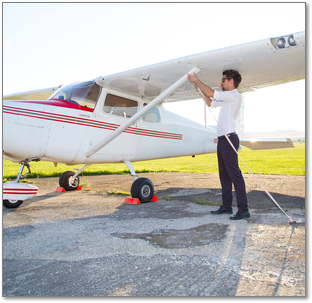Subscriber question:
"What checks should I be doing on myself prior to flying? Seems like pre-flighting the pilot is critical, but I've never heard a good way to do it."
Tom:
“There isn’t as much emphasis as there should be on self-evaluation prior to flight. The best tool is one of the simplest: the I’M SAFE model.
 I is for illness. If you have an illness, then there’s a good chance you should not fly. This is especially true if you have any symptoms of fatigue, weakness, drowsiness, congestion or difficulty with balance.
I is for illness. If you have an illness, then there’s a good chance you should not fly. This is especially true if you have any symptoms of fatigue, weakness, drowsiness, congestion or difficulty with balance.
M is for medications. For prescriptions, ask your doctor if the medication causes fatigue or impairs judgment or motor skills. There may be options that are better for pilots. For over-the-counter medications, check for any warnings about operating vehicles or drowsiness. If a medicine is approved for pilot use and the reason you’re taking it isn’t disqualifying, it’s still best to take any new medication for a couple of days before you fly to ensure you don’t have any unusual reaction.
S is for stress. Are you distracted by family or business concerns? Is there something about the flight itself that causes undue concern, such as weather, airplane condition or the schedule? Caution is a good trait in a pilot but if conditions lead to preoccupation with the hazard, or nonflying aspects of your life dominate your thinking, you should postpone the flight until the stress is reduced.
A stands for alcohol. Eight hours bottle-to-throttle is a bare minimum. You must be entirely free of alcohol impairment to fly.
F is for fatigue. Have you not slept well the last few nights? Will you end your trip at a point when you have been awake more than 12 hours, from alarm clock to engine shutdown? Sleep deprivation is as detrimental as drinking alcohol.
E is for emotion, another component of stress.
So before flight, if you can honestly say:
I feel well
I’m not taking any (new) medications
I have no undue stress affecting me
I haven’t had alcohol today
I’ve slept well
and I’m flying without distraction by emotional factors
…then you’re fit to fly.”

